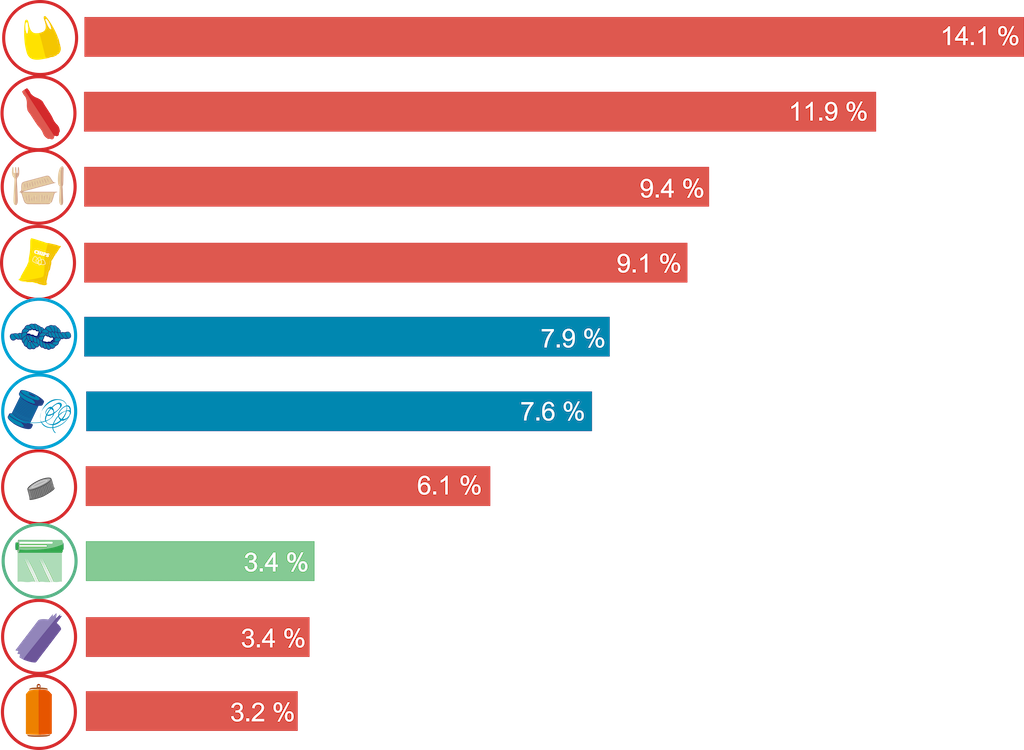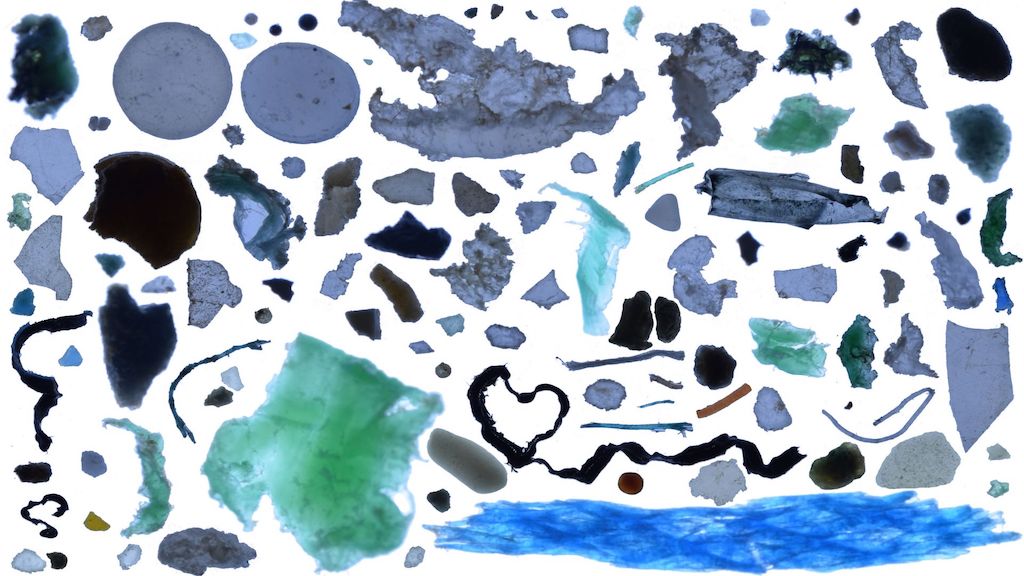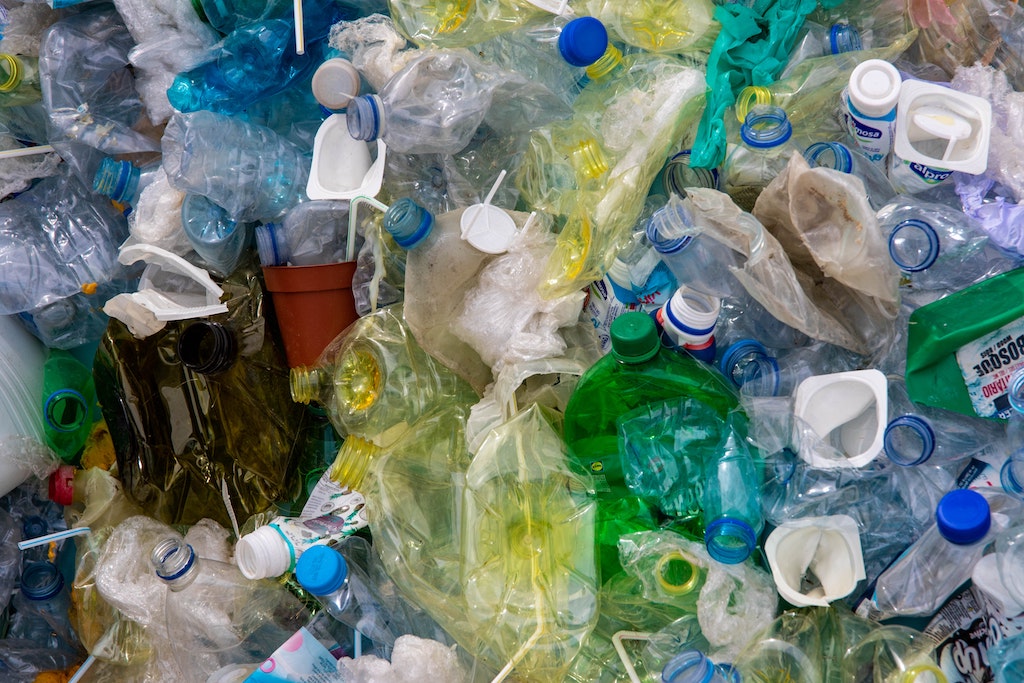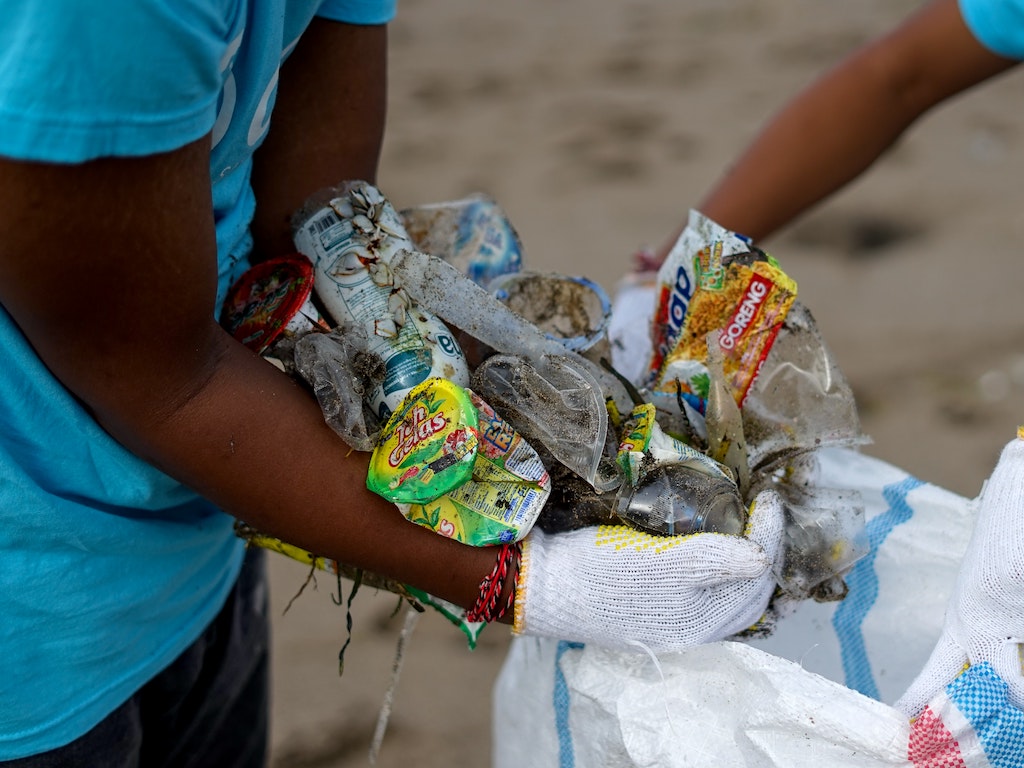4 Mins Read
Takeout packaging is dominating the litter in our oceans, a new study finds. Finding that just four food and drink items—single-use bags, bottles, containers, and wrappers—account for nearly half of all plastic pollution on shorelines and the sea, researchers say there is an urgent need for policies to intervene in the use of common throwaway plastics.
Scientists at the University of Cádiz have revealed that the four most widespread types of plastic littering the ocean all fall into the category of takeaway food and beverage packaging. Disposable plastic bags, bottles, containers, and wrappers account for 44% of all trash in the sea, found the study published in a recent issue of the journal Nature Sustainability.
Disproportionate amount of takeout packaging was ‘surprising’
Collaborating with 15 nonprofits and institutions from 10 different countries, the research team at the University of Cádiz in Spain identified the most polluting items in the world’s aquatic systems on a global scale. The researchers integrated more than 12 million sets of data from sampling and classification undertaken worldwide to compare patterns across different regions, ecosystems and rank the top items littering the sea.
Worldwide, 80% of all human-made trash found in the ocean was made of plastic, far exceeding other materials such as glass, fabric, paper, and processed wood. The majority of plastic was found in surface waters of the sea and shorelines, while fewer quantities were found in riverbeds.

But the surprising finding of the study was the huge proportion of plastic waste that came from food packaging. Three-quarters of all ocean trash came down to just 10 items in total, among them plastic lids, stirrers, and fishing gear, in addition to the four plastic takeout items.
“We were not surprised about plastic being 80% of the litter, but the high proportion of takeaway items did surprise us,” commented lead author Carmen Morales-Caselles, in conversation with the Guardian.
Current policies ‘do not yet address the core problem’
The researchers say that their findings will provide crucial information for policymakers to target plastic waste reduction in the most effective way. Describing their study as the “first complete diagnosis of the origin and nature of the litter dumped into the ocean,” the team called for prevention measures such as bans on the most commonly-used plastic throwaway items and policies to hold producers accountable.
“This information will make it easier for policymakers to actually take action to try to turn off the tap of marine litter flowing into the ocean, rather than just clean it up,” said Morales-Caselles.

“Here, we show that restrictions on the use of plastic items, such as straws, cotton buds and drink stirrers, while sound, do not yet address the core problem,” explained Andrés Cózar, professor at the University of Cádiz, who coordinated the study.
There is no silver bullet for litter pollution, studies like this one do provide a consistent basis on which to design and coordinate more effective action plans.
Morales-Caselles et al. (2021)
Plastic bans and producer-pays measures needed
What needs to happen instead, according to the study’s authors, is large-scale regulatory bans on avoidable takeout plastic products. Then, for those items that are considered “indispensable”, governments ought to bring in extended producer responsibility (EPR) policies to hold those who make the items accountable for the disposal and treatment of waste.
Introducing more non-plastic takeout alternatives will be equally key, but it will be important for companies to source more easily degradable materials properly.
“We found that paper and cardboard products, for example, show a very low occurrence in nature [1% on average], but their production also requires a sustainable raw material sourcing,” said Morales-Caselles.
“Although there is no silver bullet for litter pollution, studies like this one do provide a consistent basis on which to design and coordinate more effective action plans,” concluded the research team.

Read: Who should be paying for the plastic and climate crisis?
Global plastic action picking up speed
The results of the study come as pressure on governments and industry to take action on plastic waste reaches new heights. More than 70 countries have already pledged their support for an international plastic treaty, alongside conglomerates like Nestlé and even the chemical firms behind the production of plastic.
In May, a report found that just 20 businesses are responsible for manufacturing over half of the world’s throwaway plastic. The list of firms, dominated by petrochemical companies, added to the growing calls for producers to be held responsible for their waste.
By country, the same report found that rich nations like Australia and the U.S. produce the greatest amounts of single-use plastic waste per head of pollution at more than 50 kilograms a year, while the figure is as low as 4 kilograms a year for India.
Lead image courtesy of Unsplash.




